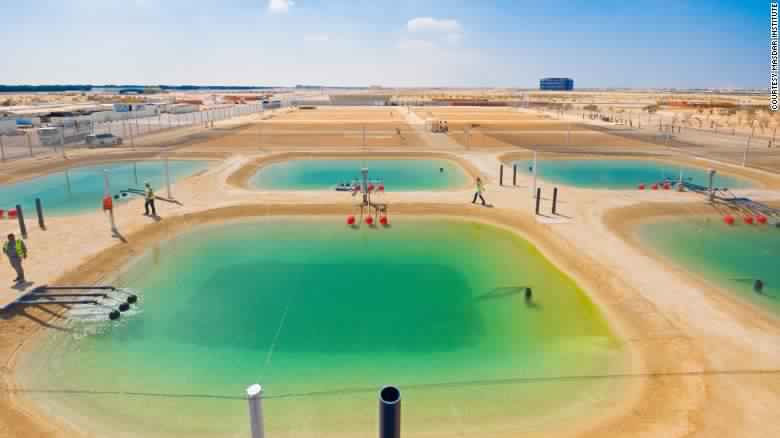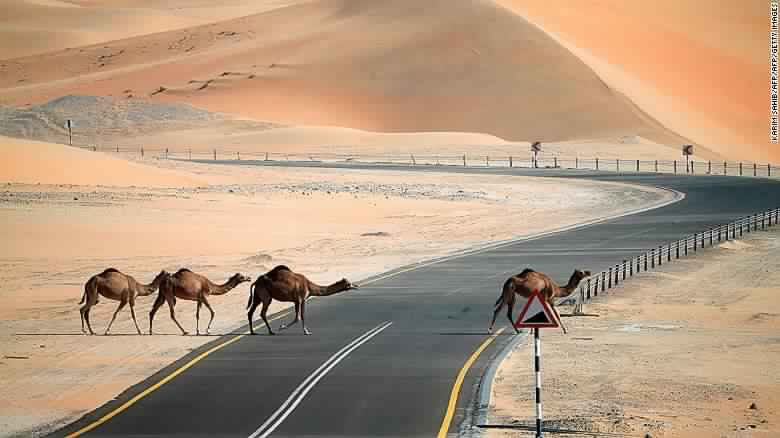The aviation industry is a major source of greenhouse gas emissions. In 2011, aviation contributed around 3% of Australia’s emissions. Despite improvements in efficiency, global aviation emissions are expected to grow 70% by 2020 from 2005. While the industry is seeking new renewable fuel sources, growing biofuels takes up valuable land and water that could be otherwise used to grow food.
But what if you could grow biofuels on land nobody wants, using just seawater and sunlight, and produce food at the same time?
That’s just what a new project in Abu Dhabi is seeking to do. The Integrated Seawater Energy and Agriculture System, or ISEAS, will grow sustainable food and aviation fuel in the desert, using seawater and sunshine, in a way that is eminently transferable to similar arid regions around the world.
The project was announced in January 2015 and is now under construction.
So, how does the project solve the biggest environmental problems?
A triple dilemma
Energy, water and food problems frequently compound each other, each making the others more difficult to resolve.
Examples abound. Think of wasteful irrigation coming up against water limits and threatening reductions in food production. But there are some projects that turn the issue around and bring water, energy and food issues into positive relations, each strengthening the others.
The Abu Dhabi project is ambitious and is called “seawater farming”. It involves the use of salt-tolerant plants like mangroves and the oil-rich Salicornia as well as aquaculture of seafood such as shrimps and fish.
The project was developed through the Sustainable Bioenergy Research Consortium in Abu Dhabi. It involves as partners the airline Etihad Airways, the Masdar Institute of Science and Technology (from the UAE), as well as corporate giants Boeing, General Electric and UOP Honeywell. These corporations provide the funding and a potentially (vast) market.
The idea is to rapidly scale up various options for securing the biomass and complementing it with associated activities to generate a closed loop operation.

How does it work?

First, seawater is used in aquaculture ponds, where (2) fish and/or shrimp varieties can be grown (= food). Then (3) the waste water from the aquaculture, which is rich in organic nutrients, is used to irrigate a salt-tolerant crop of Salicornia.
This crop is harvested (4) and the oil extracted from the seeds (= aviation biofuel). Water is then drained from the salt-tolerant crops (5) and fed into a mangrove wetland, where it is naturally purified and carbon can be sequestered (6).
Outside this sequence there is solar energy input to drive the crop production and energy production needed for pumping.
Solving complex problems
The project solves the problem of waste disposal with fish farming (aquaculture) by channeling the organic wastes as irrigation to act as fertilizer for the cultivation of the Salicornia plants. The Salicornia plants themselves (known as halophytes, or salt-resistant species) need only the seawater and grow on arid land.
The project eliminates the problem with most biofuels: that they are perceived as taking away water and arable land that could be used for food production. Instead, the Abu Dhabi project produces fuel and food and recycles everything.
The current pilot farm is entirely closed-loop, with the seawater drawn originally from the ocean passing through the various stages and finally fed to mangrove plantations.
The water is filtered through the mangroves, extracting the final nutrients, and the water can either be fed back to the ocean or recycled to the fish farms. All energy used (such as for pumping the water) is generated with a solar array — so there is no fossil fuel input at all.
The project is achieving remarkable success because it is backed financially by large players — Etihad itself as the principal airline, the Masdar Institute of S&T, and corporate giants like Boeing.
The project will scale up quickly. The pilot project is a plant covering 2 hectares, but in three years it is expected to grow to a 200 ha demonstration scale involving around 140 ha for the Salicornia cultivation, 30 ha for the aquaculture and 20 ha or more for the mangrove plantation.
Click here to go to the original source


